
Any Night Grilling is your guide to becoming a charcoal champion (or getting in your grill-pan groove), any night of the week. With over 60 ways to fire up dinner—no long marinades or low-and-slow cook times in sight—this book is your go-to for freshly grilled meals in a flash.
Order NowPopular on Food52
21 Comments
Sue J.
September 8, 2015
If you want good tender meat,Grass fat Bulls are the best. Age it 30days. This old boy has been fat and lazy all his life. works about 2 months.. Need to be careful about ageing grass fat beef, excess fat has to go.,CLEAN walk in is a MUST. The fat will go rancid if you are not careful. You can't beat Bull hamburger.
scruz
June 21, 2015
my favorite is a nice sirloin, but it must be at least an inch thick. i usually ask the butcher to cut it 3 inches thick. great leftovers for steak salad, steak enchiladas, chili, and beef stroganoff. yummy. for the first night's steak, i like to marinade and then drizzle with olive oil, minced garlic and a squeeze of lemon juice.
Jim M.
June 5, 2015
I love a skirt steak but I wouldn't exactly call them inexpensive. My local Wegmans sells them for around $18.00 per pound!
Laura415
July 25, 2014
I always use the acidic flavors contained in marinades as a side sauce for grilled meats. I just don't like soaking my meat in acids. It changes the buttery, salty, mineral tang of the meat of a grass fed steer too much for my taste. Chimichurri sauce on the side for me please.
James L.
July 23, 2014
What is the origin of the hanger steak. Is it the diaphragm muscles or some part of the abdominal muscles?
Kay
July 5, 2014
My absolute favorite (and a favorite of family and friends) is a Tri-Tip. Always delicious! I cover the entire cut with Lowry's seasoning salt then grill. Perfect every time.
Jim
September 2, 2013
The mention of bison was great but with all the drugs in beef and most being corn (GMO) finished, I'd really like to see grass fed meat discussed much more frequently!
I_Fortuna
September 1, 2013
When I was a child, my grandfather always did the BBQ and it was always Porterhouse or New York steaks. I wish I knew what he did to make them so good. When they were done, my grandmother would always cut the filet for me. I grew up thinking all steaks should be this tender and delicious. They owned a Black Angus ranch in Nevada and really knew their beef. Now, I always insist my steaks be rare and Angus. Yes, I am spoiled, but I am worth it.
Benjamin B.
August 17, 2013
can you explain your tip "look for the steaks cut closest to the tenderloin"...how can you tell where it was cut? i cant call myself a steak noob but this was a bit confusing...thanks!
thirschfeld
August 17, 2013
I am talking about t-bones in this case. As you move from the back to the front of the cow the tenderloin diminishes. Think of a pencil and as you move toward the head of the cow the pencil tapers to a point. T-bones can be cut with no tenderloin on it (as mentioned below it's sometimes called a club steak when there is no filet) but as you move forward to the head of the cow the t-bones (they now contain a larger portion of filet on one side of the bone) eventually become a porterhouse which contains the largest cuts of filet mignon on one side of the bone. Does that make sense?
thirschfeld
August 17, 2013
sorry that should say, "as you move backward to the tail of the cow the t-bones (they now contain a larger portion of filet on one side of the bone) eventually become a porterhouse which contains the largest cuts of filet mignon on one side of the bone." Does that make sense?
Alfred G.
August 17, 2013
The Flap Steak
The flap steak, or flap meat as it is also called, is a small cut found in the short loin. Technically known as the obliquus internus abdominis muscle, it is a flat layer of muscle found on top of the tri-tip. It is cut from the tri-tip by slicing horizontally through the layer of fat and connective tissue that binds them together. Once trimmed, the flap is a thin piece of relatively tender beef, with long muscle fibers similar to those of the beef flank.
The Skirt Steak
There are two types of skirt steak, the inside and the outside portions, both cut from the "plate" portion of the steer's abdomen. The outside portion is slightly larger. There are a total of four skirt steaks on a carcass, but they are relatively small and in an average steer they will only total 8 lbs. of trimmed beef. Like the flank and flap steaks, skirt steaks have long, chewy fibers, but can be tender if prepared correctly.
Read more: http://www.ehow.com/info_8510904_difference-between-flap-skirt-steak.html#ixzz2cFzD39pG
The flap steak, or flap meat as it is also called, is a small cut found in the short loin. Technically known as the obliquus internus abdominis muscle, it is a flat layer of muscle found on top of the tri-tip. It is cut from the tri-tip by slicing horizontally through the layer of fat and connective tissue that binds them together. Once trimmed, the flap is a thin piece of relatively tender beef, with long muscle fibers similar to those of the beef flank.
The Skirt Steak
There are two types of skirt steak, the inside and the outside portions, both cut from the "plate" portion of the steer's abdomen. The outside portion is slightly larger. There are a total of four skirt steaks on a carcass, but they are relatively small and in an average steer they will only total 8 lbs. of trimmed beef. Like the flank and flap steaks, skirt steaks have long, chewy fibers, but can be tender if prepared correctly.
Read more: http://www.ehow.com/info_8510904_difference-between-flap-skirt-steak.html#ixzz2cFzD39pG
Bob K.
August 17, 2013
Nice article, but with what I believe to be a couple of misinformation.
1. Filets do not have any marbling.
2. T-bones DO have a filet side; it just is usually smaller than that of a Porterhouse.
1. Filets do not have any marbling.
2. T-bones DO have a filet side; it just is usually smaller than that of a Porterhouse.
thirschfeld
August 17, 2013
Well, they do have marbling. Granted the tenderloin is very lean but it still contains fat. It is also tender because it is the least used muscle. All you need to do is go to google images, type in raw filet mignon and you will see lots of filets with marbling. You are right t-bones can have a filet side but just as often they don't. My point is look for the t-bones with tenderloin and get your moneys worth.
Bob K.
August 17, 2013
Thanks for your comment. In all of my
66 years I have never seen a t-bone without a filet side. If it did not have a filet side, it was called a club steak.
66 years I have never seen a t-bone without a filet side. If it did not have a filet side, it was called a club steak.
Rochelle B.
August 17, 2013
Tip #5 is my favorite tip! The livestock manager and butcher on the farm where I last worked was adamant about not overpowering the beef flavor on quick-cookers. And after putting in all that time and pasture, I understand why!
k.woody
August 16, 2013
Great information, thanks! I'm a huge fan of skirt steak. Grilled with canola oil, salt, and pepper and served with chipotle sauce. Heaven. It's also called flap meat sometimes, no?
Alfred G.
August 16, 2013
Not necessarily. Skirt steak is the outside flap and actual flap meat is the inside flap and is not as good as skirt steak.
thirschfeld
August 17, 2013
I have never heard it called the flap. That is interesting. There is an inside skirt and an outside skirt both come from the "flap" up toward the front leg end of the cow. The flank comes from the same area but towards the hind end.
Marc S.
August 23, 2013
As per the NAMP Meat Buyers guide the obliquus abdominis internus is the flap.
Further infos you may also find here:
http://www.ehow.com/info_8510904_difference-between-flap-skirt-steak.html
Further infos you may also find here:
http://www.ehow.com/info_8510904_difference-between-flap-skirt-steak.html
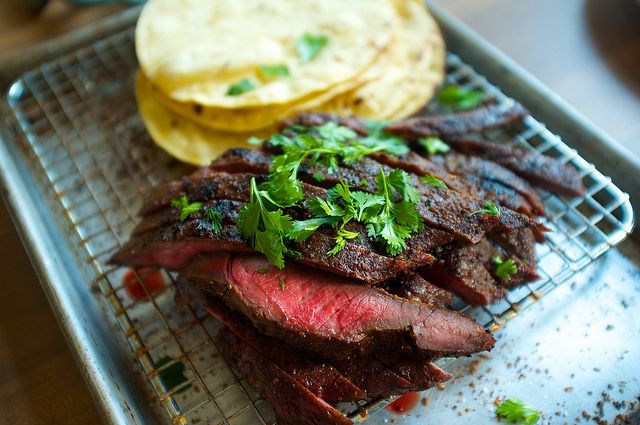
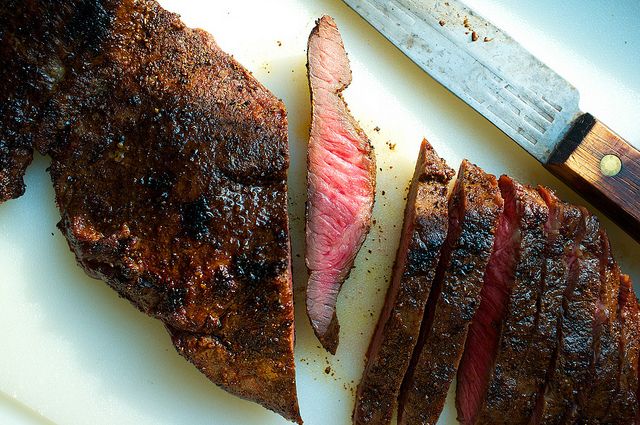
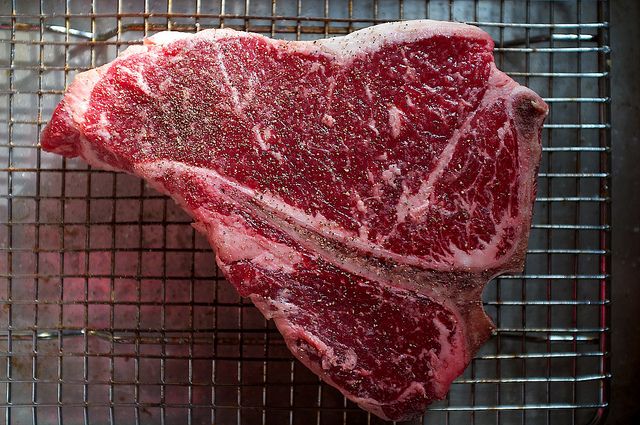
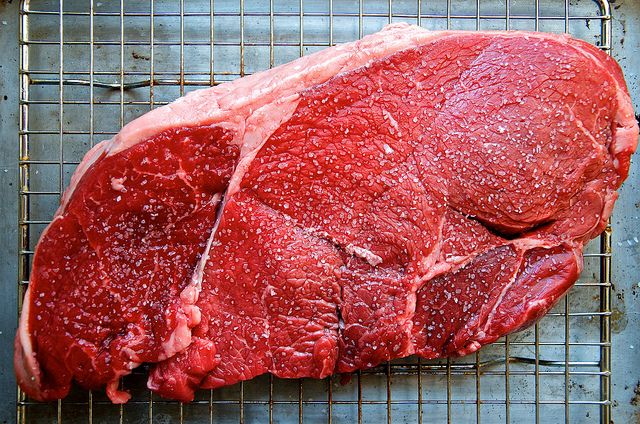
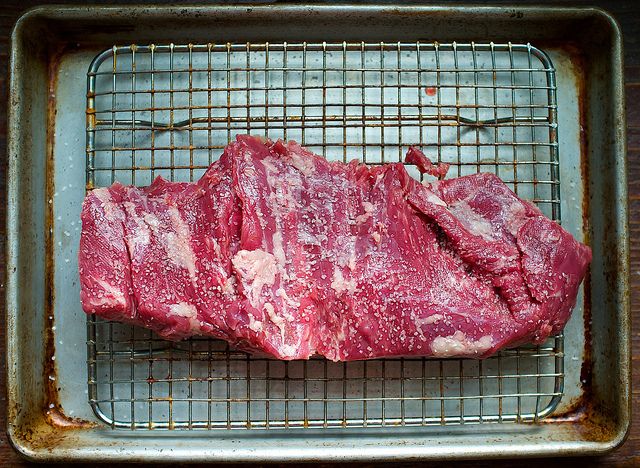
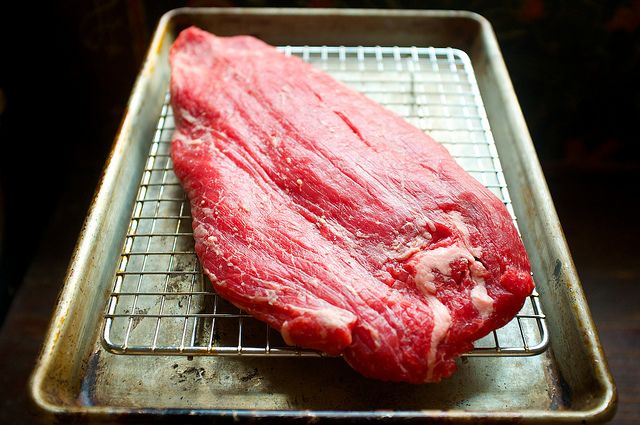
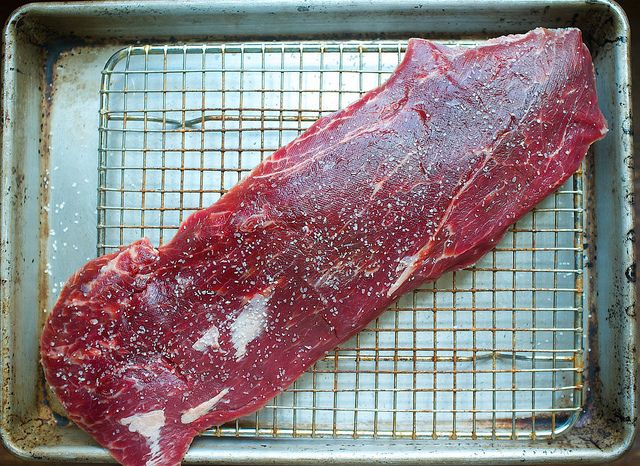
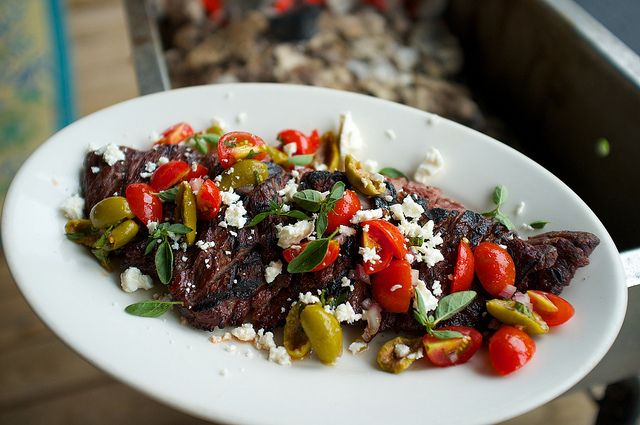
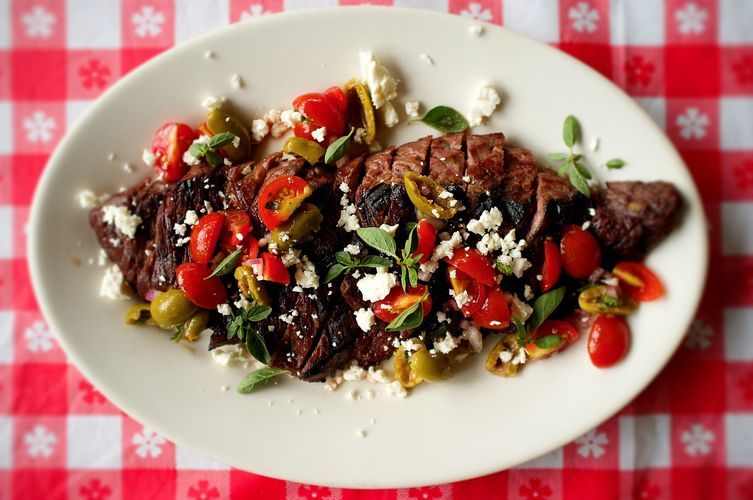

See what other Food52 readers are saying.